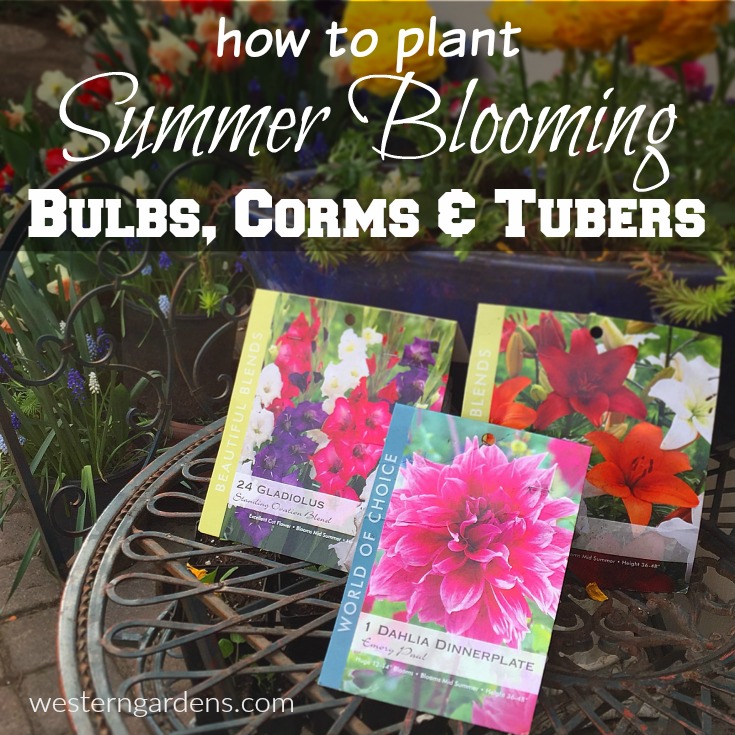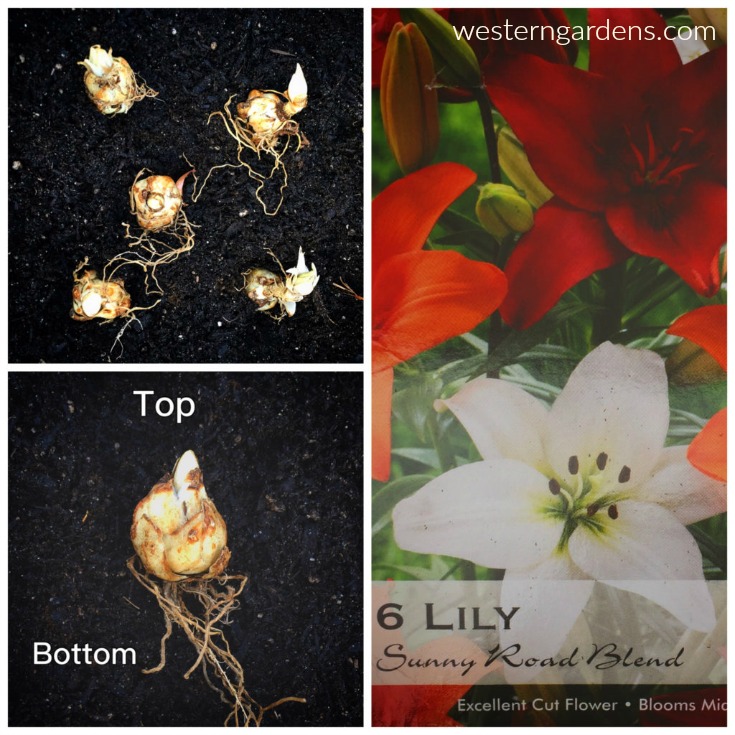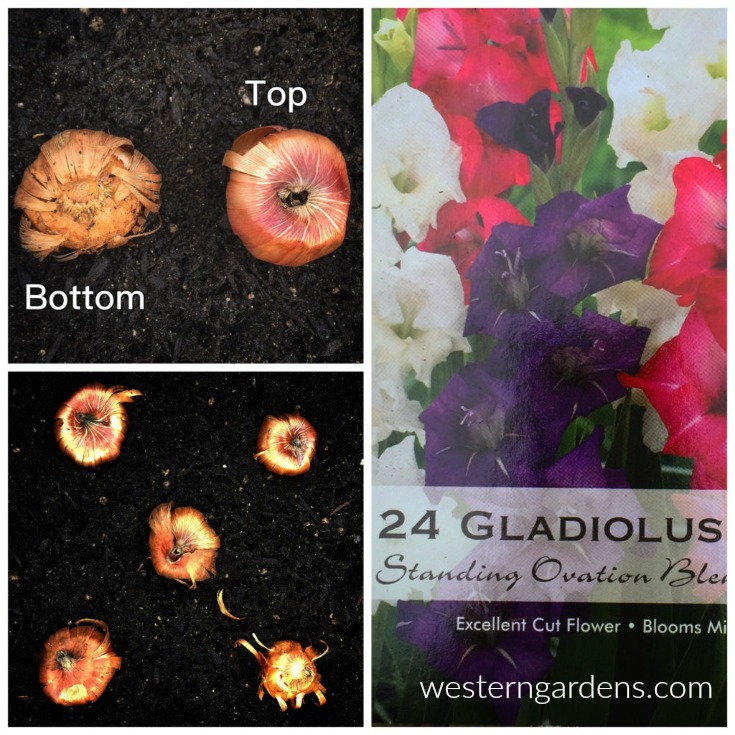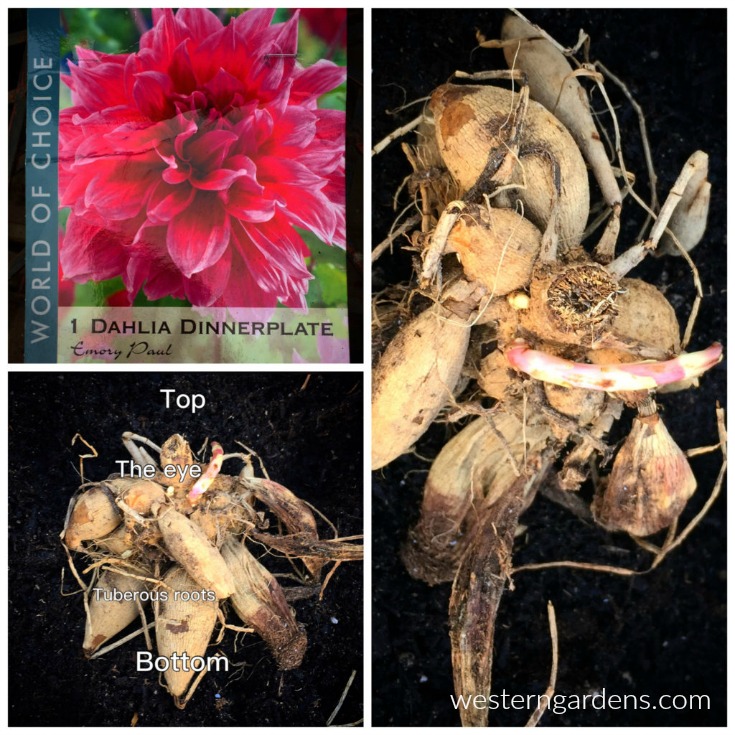Welcome Gardening Friends! Good to see you again.

I love to plant summer blooming flowers and I’ve been dreaming of a cut flower garden all winter. My dream started last fall when I decided to add more spring bulbs to my garden so that I’d have plenty of flowers for cut arrangements. There is something wonderful about bringing your own beautiful blooms indoors and sharing them with friends and neighbors. As I contemplated spring additions to my flower garden, I decided I also needed to add some summer and fall blooms. Specifically, I wanted to add lilies, gladiolas, and dahlias. These summer flowers are usually not available in late fall, so I patiently waited for them to arrive at the store this spring. Now it’s time to plant and I’m so excited to share with you everything you need to know about planting these beauties!
Lilies (Lilium)
Lilies are such gorgeous flowers. Their sturdy stems and large flowers make them great for cutting. There are two main varieties of lilies that we carry at Western Garden Center: Asiatic and Oriental lilies. Asiatic lilies bloom in early summer. They come in a wide range of colors and heights. Oriental lilies tend to bloom later than Asiatic varieties. Oriental lilies like Casa Blanca and Stargazer are wonderfully fragrant. Western Gardens carries lily bulbs in early spring and potted lilies later in the season.
 Asiatic and Oriental lilies are cold hardy perennials in Utah and will winter over. Lilies bulbs are scale bulbs and do best if planted as soon as possible. They prefer to be planted when the soil temperature is below 60 degrees. This helps their roots establish before it gets too hot. They need a sunny location with rich organic soil. I amend my soil with Bumper Crop® Soil Builder to give them the best possible start. I plant the bulbs 6- 8 inches deep and 6 inches apart. Plant them in groups of three to make a powerful statement. Make sure they had plenty of room, they don’t like competing for resources with other plants. The picture above gives you a visual of which end should be facing up and which end should be facing down.
Asiatic and Oriental lilies are cold hardy perennials in Utah and will winter over. Lilies bulbs are scale bulbs and do best if planted as soon as possible. They prefer to be planted when the soil temperature is below 60 degrees. This helps their roots establish before it gets too hot. They need a sunny location with rich organic soil. I amend my soil with Bumper Crop® Soil Builder to give them the best possible start. I plant the bulbs 6- 8 inches deep and 6 inches apart. Plant them in groups of three to make a powerful statement. Make sure they had plenty of room, they don’t like competing for resources with other plants. The picture above gives you a visual of which end should be facing up and which end should be facing down.
Gladiolas (gladiolus)
How I love gladiolas! My grandfather would bring home gladiolas for my grandmother. Gorgeous stately blooms graced her dining room table throughout the summers. I’m planting them for two reasons; first in memory of my grandparents and second because I love how long gladiolas last as cut flowers. Their flowers fade from the bottom of the stem upward. You can continue to cut off the stem as the blossoms fade leaving the fresh blossoms for continued enjoyment. Gladiola corms are available in the spring for planting.
 I suggest to plant summer blooming gladiolas each weekend for three consecutive weeks so blooms will last throughout the summer. Gladiolas should be planted after the danger of frost has passed. They need a sunny location. Unlike lilies, they don’t have a problem sharing space with neighboring plants. I will plant them 3-4 inches deep and about 6 inches apart. For a greater impact, I plant them in groups of three or more. Gladiolas are not cold hardy in Utah. In the fall, dig them up and store them over the winter until planting them again next spring. The picture above indicates which direction to plant gladiola corms.
I suggest to plant summer blooming gladiolas each weekend for three consecutive weeks so blooms will last throughout the summer. Gladiolas should be planted after the danger of frost has passed. They need a sunny location. Unlike lilies, they don’t have a problem sharing space with neighboring plants. I will plant them 3-4 inches deep and about 6 inches apart. For a greater impact, I plant them in groups of three or more. Gladiolas are not cold hardy in Utah. In the fall, dig them up and store them over the winter until planting them again next spring. The picture above indicates which direction to plant gladiola corms.
Dahlias
Dahlias are my favorite cut flower. There are so many wonderful varieties in many heights and colors. Some of the shorter varieties bloom from spring until frost. The larger varieties start blooming in late summer and continue blooming into the fall. Western Garden Center carries dahlias in seeds, tubers, and in plant form. This year I’ve chosen to plant some Dinnerplate Dahlias from tubers. They have amazingly large blossoms, hence their name. Dahlias should be planted in rich organic soil, in a sunny spot, and after the last frost. I am planting mine in pots early so I can get them started. I use Gardener’s Gold Organic Potting Soil. They will remain in pots outdoors for awhile so that when I see that temperatures are going to drop I can bring them inside. After the last frost, I will plant them outside. When planting it is important to give them plenty of room. I make sure each tuberous root has space between itself and its neighbors and then I’ll cover them with soil. Last year’s stem (the eye) should just be barely below the surface. Like the gladiolas, dahlias are not cold hardy in Utah. I will dig up the tubers in the fall and store them indoors over the winter until I plant them again next spring. The picture above identifies the eye of the dahlia and its tuberous roots.
Dahlias should be planted in rich organic soil, in a sunny spot, and after the last frost. I am planting mine in pots early so I can get them started. I use Gardener’s Gold Organic Potting Soil. They will remain in pots outdoors for awhile so that when I see that temperatures are going to drop I can bring them inside. After the last frost, I will plant them outside. When planting it is important to give them plenty of room. I make sure each tuberous root has space between itself and its neighbors and then I’ll cover them with soil. Last year’s stem (the eye) should just be barely below the surface. Like the gladiolas, dahlias are not cold hardy in Utah. I will dig up the tubers in the fall and store them indoors over the winter until I plant them again next spring. The picture above identifies the eye of the dahlia and its tuberous roots.
Once they’ve all been planted, I’ll feed them regularly with a Gardner & Bloom’s Bud and Bloom Fertilizer. This helps these summer bloomers develop strong roots and beautiful blossoms.